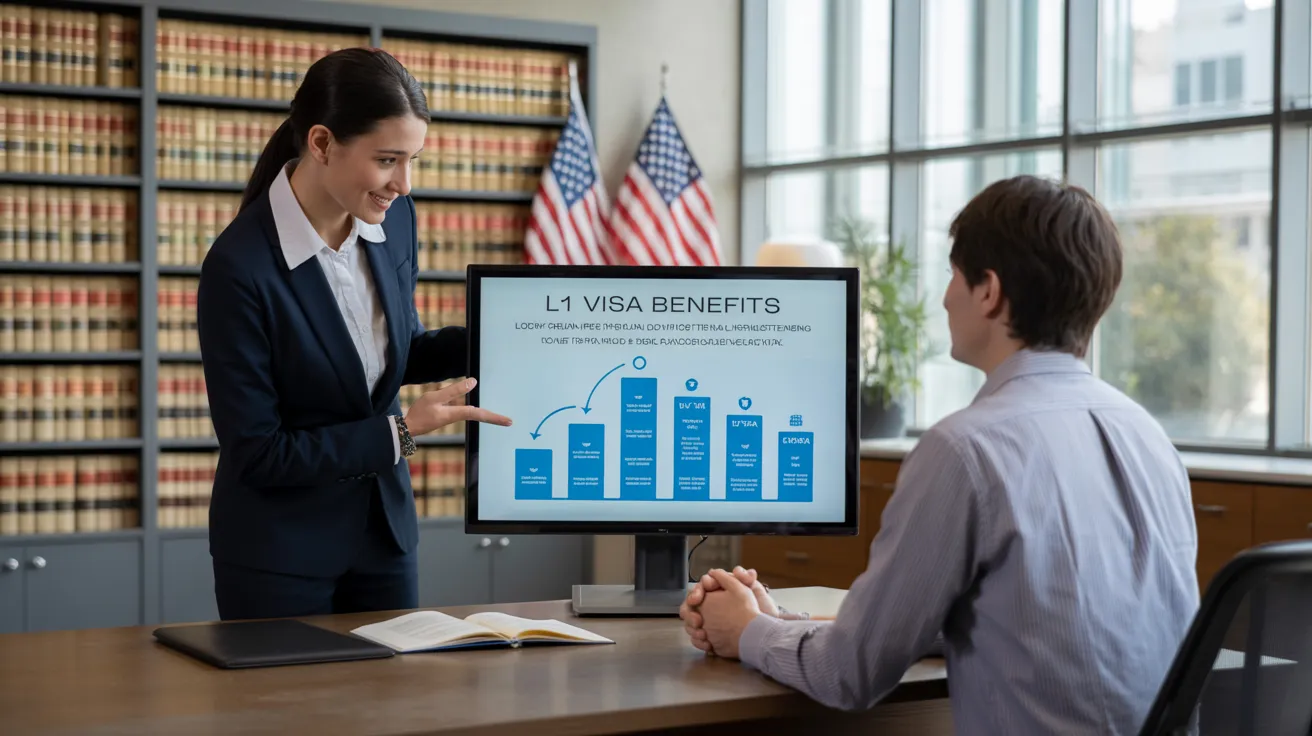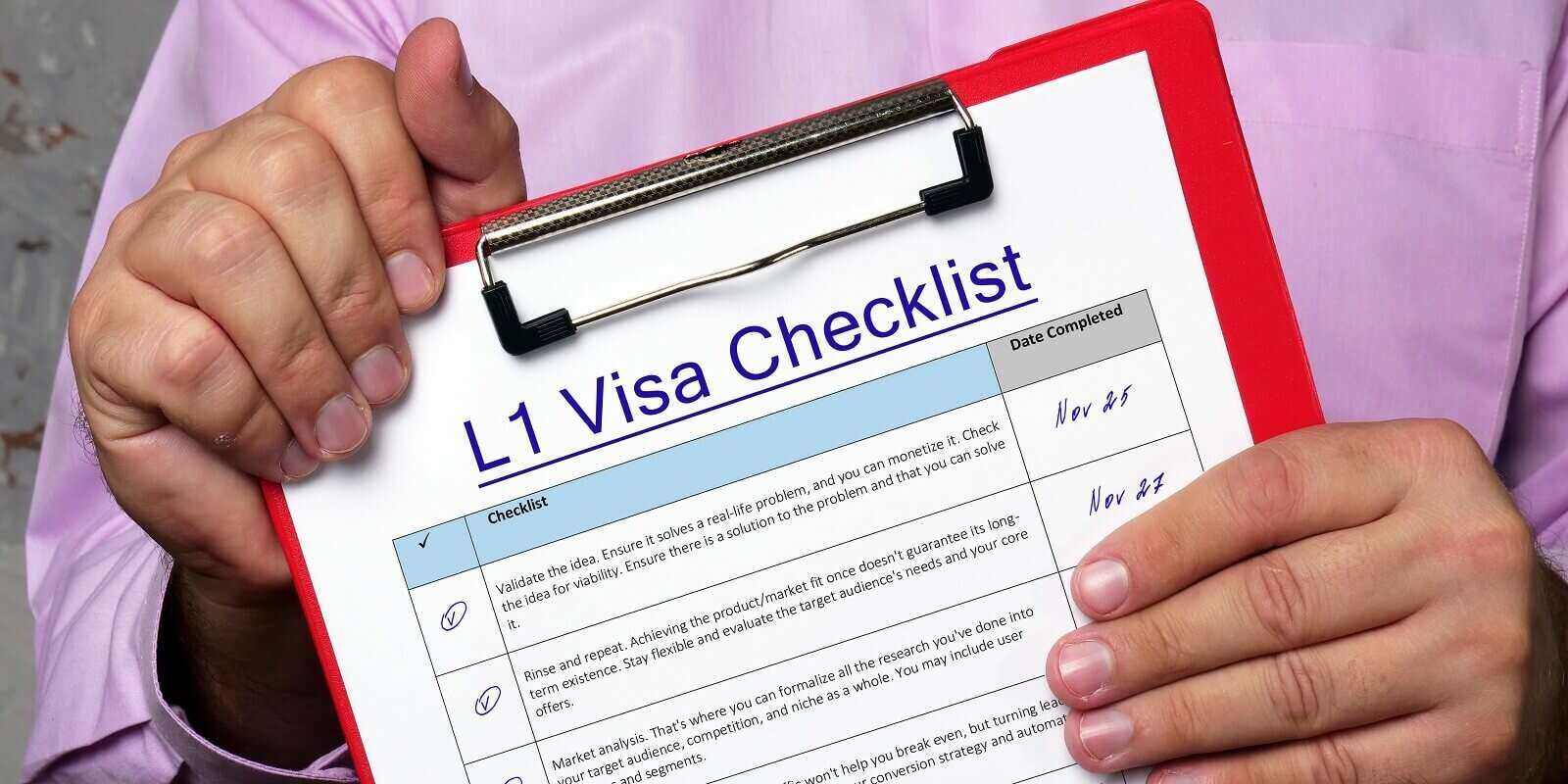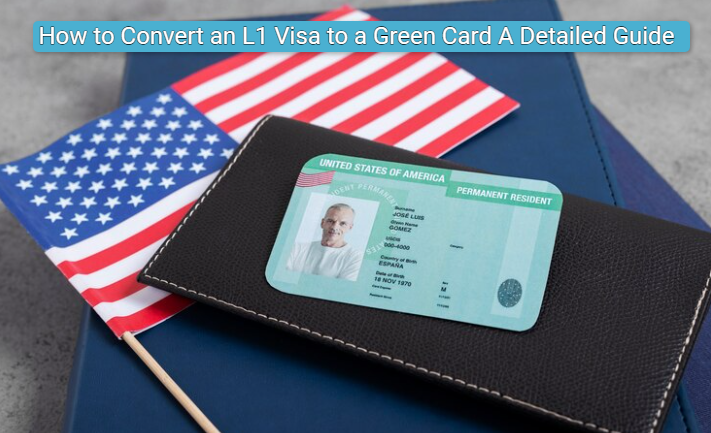Unlocking Opportunities: A Comprehensive Guide to the L1 Visa Process
The L1 visa procedure offers a crucial pathway for multinational business seeking to transfer crucial employees across borders. Recognizing the subtleties of eligibility standards, the differences between L-1A and L-1B visas, and the intricacies of the application process can considerably affect an applicant's success. Nonetheless, steering this facility landscape is not without its challenges, and mindful attention to documentation and company sponsorship is essential. As we discover the key components of this procedure, the strategies for overcoming prospective obstacles will certainly end up being evident, exposing how informed prep work can open up a world of possibilities.
Comprehending the L1 Visa
Comprehending the L1 visa requires acknowledging its value as a crucial tool for multinational companies seeking to transfer experienced workers between international offices. This non-immigrant visa category facilitates the activity of execs, supervisors, and specialized understanding workers to the USA, therefore enabling companies to keep operational continuity and harness international talent efficiently. The L1 visa is separated into two primary classifications: L-1A for supervisors and executives, and L-1B for employees possessing specialized knowledge.The L1 visa offers a vital duty in improving a company's affordable edge in the international market. By allowing firms to relocate their key employees, services can ensure that vital jobs are managed by qualified individuals who are already accustomed to the business's culture and functional processes. L1 Visa. This interior transfer system not just cultivates expertise sharing but also advertises innovation and collaboration throughout borders.Moreover, the L1 visa is usually favored for its relatively uncomplicated application procedure compared to various other visa categories, as it enables twin intent, allowing owners to seek irreversible residency while on a short-term copyright. This function makes the L1 visa particularly appealing for both companies and workers, as it enhances the pathway for knowledgeable experts to establish long-lasting residency in the USA
Qualification Standards
Qualification for the L1 visa rests on numerous crucial criteria that guarantee both the staff member and the employer fulfill details certifications. This non-immigrant visa is made for international companies to transfer employees from international offices to U.S. counterparts.Firstly, the company should be a qualifying company, which includes a moms and dad firm, branch, affiliate, or subsidiary of an U.S. company. The company needs to have been doing business for at the very least one year both in the U.S. and abroad. This guarantees that the firm has sufficient functional stability and a legitimate presence.Secondly, the worker must hold a supervisory, exec, or specialized knowledge setting. For L1A visas, the candidate must show managerial or executive certifications, while L1B visas concentrate on specialized understanding pertaining to the company's products, services, or processes. In addition, the employee needs to have benefited the international entity for at the very least one continual year within the last 3 years prior to their application.Lastly, the worker's function in the U.S. must line up with their previous setting, making sure that their abilities and know-how are leveraged for the firm's advantage.

Sorts Of L1 Visas
The L1 visa group consists of two key kinds created to help with the transfer of staff members within multinational business: the L1A visa for managers and executives, and the L1B visa for employees with specialized understanding. Each type offers distinctive objectives and has specific qualification criteria.The L1A visa is tailored for people that hold managerial or executive placements within a firm. This visa enables high-level staff members to transfer to a united state branch, subsidiary, or affiliate of the very same organization. Candidates for the L1A visa must show that they have been employed in a supervisory or executive capability for at the very least one continuous year within the past three years before their application. In addition, this visa provides a much longer duration of remain, at first approved for 3 years, with the possibility of extensions for up to seven years.In comparison, the L1B visa is planned for experts with specialized knowledge relevant to the company's products, services, or processes. To qualify, candidates should show that their competence is critical to the company which they have actually benefited at the very least one continuous year within the last 3 years in a function that needed this specialized expertise. The L1B visa is at first provided for three years, with extensions readily available for up to 5 years.Both visa types are vital for companies looking for to improve their worldwide procedures by leveraging experienced workers, consequently promoting technology and effectiveness within the united state market.
Application Process
Guiding via the L1 copyright procedure entails several essential actions that need to be meticulously complied with to guarantee a successful outcome. The process begins with the united state company, that need to initially establish qualification by demonstrating a certifying partnership with the international entity and validating that the worker fulfills the particular demands for the L1 visa category being sought.Once eligibility is validated, the employer launches the procedure by filing Form I-129, the Request for a Nonimmigrant Worker, with the U.S. Citizenship and Immigration Services (USCIS) This type should be accompanied by a thorough summary of the work obligations to be done, the organizational framework of both the U.S. and international entities, and the staff member's credentials. It's important to confirm that all information is precise and complete, as noninclusions or errors can lead to hold-ups or denials.Upon authorization of the I-129 petition, the following step involves the worker getting the L1 visa at a united state embassy or consulate in their home nation. This phase needs the completion of Type DS-160, the Online Nonimmigrant copyright, and scheduling an interview. Throughout the interview, the applicant must offer proof supporting their qualifications and the company's petition.After the visa is granted, the employee can get in the USA to operate in the designated role. Overall, mindful prep work and adherence to each step of the application process are vital for a successful L1 visa outcome.
Needed Documents

Important Kinds Required
Navigating the L1 Visa procedure requires careful attention to the vital kinds and documentation required for an effective application. The primary type needed is the Type I-129, Request for a Nonimmigrant Employee, which need to be completed and sent by the U.S. employer (L1 Visa). This form outlines the details of the employment deal and the qualifications of the worker seeking the L1 Visa.Alongside Type I-129, the candidate will certainly require to complete Kind I-539 if going along with relative are likewise looking for visas. Furthermore, the employer must supply evidence of the qualifying relationship in between the U.S. entity and the international entity, usually requiring the entry of corporate papers such as articles of consolidation or monetary statements.Moreover, it is vital to consist of the L Category Supplement to Kind I-129, which defines the sort of L Visa being requested-- either L-1A for supervisors and executives or L-1B for workers with specialized knowledge. Applicants must guarantee that all types are authorized and dated appropriately, as insufficient submissions can lead to delays or rejections. Appropriately constructing these vital kinds lays the structure for a smoother L1 copyright procedure
Supporting Proof Requirements
Sustaining paperwork is essential for a successful L1 copyright, as it corroborates the insurance claims made in the application. Candidates must supply a variety of documents to show qualification for the visa, which is classified into two main kinds: proof of the qualifying partnership in between the united state and foreign entities and evidence of the candidate's qualifications.To develop the connection, applicants ought to submit documentation such as corporate business charts, financial declarations, and evidence of ownership. These records verify that the foreign firm has a qualifying partnership with the U.S. employer, whether as a parent company, subsidiary, L1 Visa Lawyer branch, or affiliate.For the applicant's qualifications, vital documents consist of an in-depth work letter from the foreign company, describing the candidate's job title, obligations, and period of employment. In addition, educational credentials, such as degrees and diplomas, must be supplied to verify the applicant's know-how in the relevant area.
Company Sponsorship Files
Company sponsorship files play an important function in the L1 copyright procedure, as they validate the united state employer's dedication to the applicant's employment in the USA. These records are essential for showing the employer's qualification to sponsor the candidate for the L1 Visa.Key records commonly required consist of a thorough work letter from the U.S. employer, which describes the work title, responsibilities, and the nature of the employment partnership. In addition, the company needs to offer evidence of the firm's legitimacy, such as service licenses, income tax return, and organizational charts, illustrating the partnership between the U.S. entity and the international company.Furthermore, proof of the worker's qualifying relationship with the international business is required. This might include paperwork evidencing the staff member's role in the foreign entity, such as pay stubs, employment agreement, or efficiency analyses.
Usual Difficulties
Steering the L1 visa process provides numerous usual obstacles that applicants should recognize (L1 Visa). Secret concerns frequently consist of rigid documentation demands, possible delays in processing times, and the requirement for stringent legal compliance. Recognizing these obstacles can assist candidates better prepare and minimize threats throughout their copyright trip
Documentation Requirements
The L1 copyright process often offers considerable obstacles associated to paperwork needs. Applicants should give comprehensive documentation to establish eligibility, which can lead to confusion and potential hold-ups. Trick papers consist of proof of a certifying relationship between the united state and international company, proof of the candidate's work history, and detailed info regarding the job duty in the U.S.One typical difficulty is gathering adequate proof to demonstrate the nature of the qualifying partnership. Business typically have a hard time to present clear organizational charts or financial statements that illustrate the connection between the entities. In addition, making certain that letters of support from employers accurately reflect the applicant's work responsibilities and qualifications is important, as obscure summaries can result in denials.Another issue emerges from the requirement for detailed task descriptions that straighten with the L1 visa classifications. Candidates have to articulate not only their present duty however additionally their supervisory or customized understanding obligations clearly. This requires an extensive understanding of both the candidate's position and the regulatory language used in L1 applications.
Processing Dead Time
Experiencing delays in processing times is a common challenge encountered by L1 visa applicants, frequently leading to irritation and unpredictability. Several aspects add to these hold-ups, consisting of high application volumes, boosted scrutiny of applications, and management stockpiles within the united state Citizenship and Immigration Solutions (USCIS) Applicants might find that handling times can vary significantly relying on the service facility managing their application, as each center has its very own workload and performance levels. Additionally, the complexity of the candidate's instance, such as the need for comprehensive documents or explanation, can additionally prolong wait times.In some instances, problems associated with the candidate's current migration standing or previous visa history may likewise result in additional hold-ups, as USCIS may require more testimonial or details. It is necessary for prospects to continue to be positive during this duration, preserving open communication with their companies and legal reps to resolve any prospective concerns promptly.Understanding these processing time obstacles can help L1 visa candidates get ready for feasible hold-ups and minimize the effect on their change and job plans. Persistence and diligence are important virtues in navigating this complex procedure.
Legal Compliance Issues
Many L1 visa applicants come across lawful compliance issues that can complicate their journey towards getting the visa. Recognizing and sticking to the certain laws established by the united state Citizenship and Migration Services (USCIS) is vital. Common challenges include demonstrating the qualifying connection in between the international and U.S. companies, along with proving that the candidate has the requisite specific knowledge or managerial capacity.Additionally, candidates must provide complete documents describing their task obligations, business structure, and financial stability of the united state entity. Insufficient or imprecise documents can bring about hold-ups and even rejections. Employers should additionally assure that they comply with labor legislations, including wage and working condition standards, which can impact visa eligibility.Another usual issue entails maintaining conformity with the terms of the visa once given. Adjustments in work standing, job obligations, or firm structure can require changes to the visa, which otherwise dealt with immediately can lead to lawful difficulties. Consequently, remaining notified concerning conformity requirements and seeking lawful guidance when required is important to browse the complexities of the L1 visa procedure effectively.
Tips for Success
Success in the L1 copyright procedure usually rests on precise preparation and focus to detail. To improve your chances of authorization, begin by extensively understanding the eligibility requirements for both the L1A and L1B visa groups. Examine whether your placement at the business qualifies as supervisory, exec, or specialized knowledge, as this categorization notably impacts your application.Next, gather substantial paperwork that corroborates your insurance claims. This consists of business charts, thorough work descriptions, and proof of the business's operational framework. Clear and concise evidence of the qualifying connection between the united state entity and the international entity is important. Verify that all documents are organized logically and provided in an expert way, as this mirrors your dedication and severity about the application.Engage the solutions of a seasoned immigration lawyer who concentrates on L1 visas. Their knowledge can show very useful, assisting you with complicated policies and assuring that all paperwork adheres to existing laws. Furthermore, prepare for the meeting by practicing solution to typical questions and preparing to review your function and contributions to the company comprehensive.
Frequently Asked Inquiries
Can Family Members Members Go Along With the L1 Visa Holder?
Yes, relative of L1 visa holders, consisting of partners and unmarried children under 21, can go along with the primary visa holder. They may also request L2 visas, which permit them to stay in the United States.
How Much Time Can I Remain On an L1 Visa?
The L1 visa permits initial remains of approximately three years, with the possibility of extension. L1A visa holders may stay for an optimum of 7 years, while L1B visa owners can stay for 5 years.
Can L1 Visa Owners Obtain a Permit?
Yes, L1 visa holders can request a permit. They might seek permanent residency via employment-based classifications, typically calling for sponsorship from their company, supplied they meet the required certifications and documentation demands.
What Takes place if My L1 copyright Is Denied?
If your L1 copyright is rejected, you may obtain a notification describing the factors for rejection. You can look for to appeal the choice, reapply, or explore alternate visa alternatives based on your circumstances.
Exist Any Travel Limitations With an L1 Visa?
An L1 visa generally allows for worldwide travel; however, re-entry to the united state is contingent upon keeping valid condition. Tourists must assure conformity with visa conditions to avoid problems upon return
Conclusion
